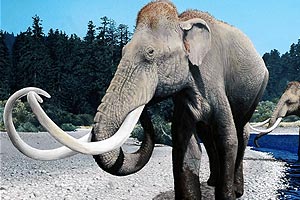At Sonoma County State Beach, just south of the mouth of the Russian River, stand two seastack rock pillars surrounded by large boulders. The prominent blue schist rocks form something like an amphitheater above the coastal cliffs.
There is something about these rocks that draws you in. Maybe it's the way they jut out of the ground? Or perhaps it's the "Stonehenge" way they form an enclosed circle? Or maybe it's just a nice place to get out of the wind? Whatever it is, they seem to pull you towards them. And once you are there, they almost call out to be touched. The rocks, long known as the "Sunset Boulders," have attracted rock climbers for years. I've climbed these rocks before. But like so many other people, I had no idea I was touching history.
During the Pleistocene, 10 to 20,000 years ago, this place was very different than it is today, inhabited by massive mega-fauna; bigger elephants, lions, bears and wolves, than we see today. While those big animals went extinct thousands of years ago, they left their mark on this place.
Looking around these rocks it is easy for me to imagine the herds of Columbian Mammoths lumbering from the nearby wallow to rub against the boulders. I can picture huge herds of camel and horse grazing nearby. Yes, those animals evolved here in North America and then crossed into Asia where they thrived and survived. Weaving my way between the boulders, I can imagine how the predators could have used these rocks as an ambush site. I envision a huge saber-tooth cat slinking between the craggy rocks, looking to pounce on an unwary bison. I can see the prides of American Lion, similar but much larger than African Lions, basking on the tabletop boulders after a big kill. I can also picture the ultimate predator making their campsite here when that first hunting party foraged deeper inland. Yes, humans were here too. And I'm sure the same pull these rocks have today existed back then.
